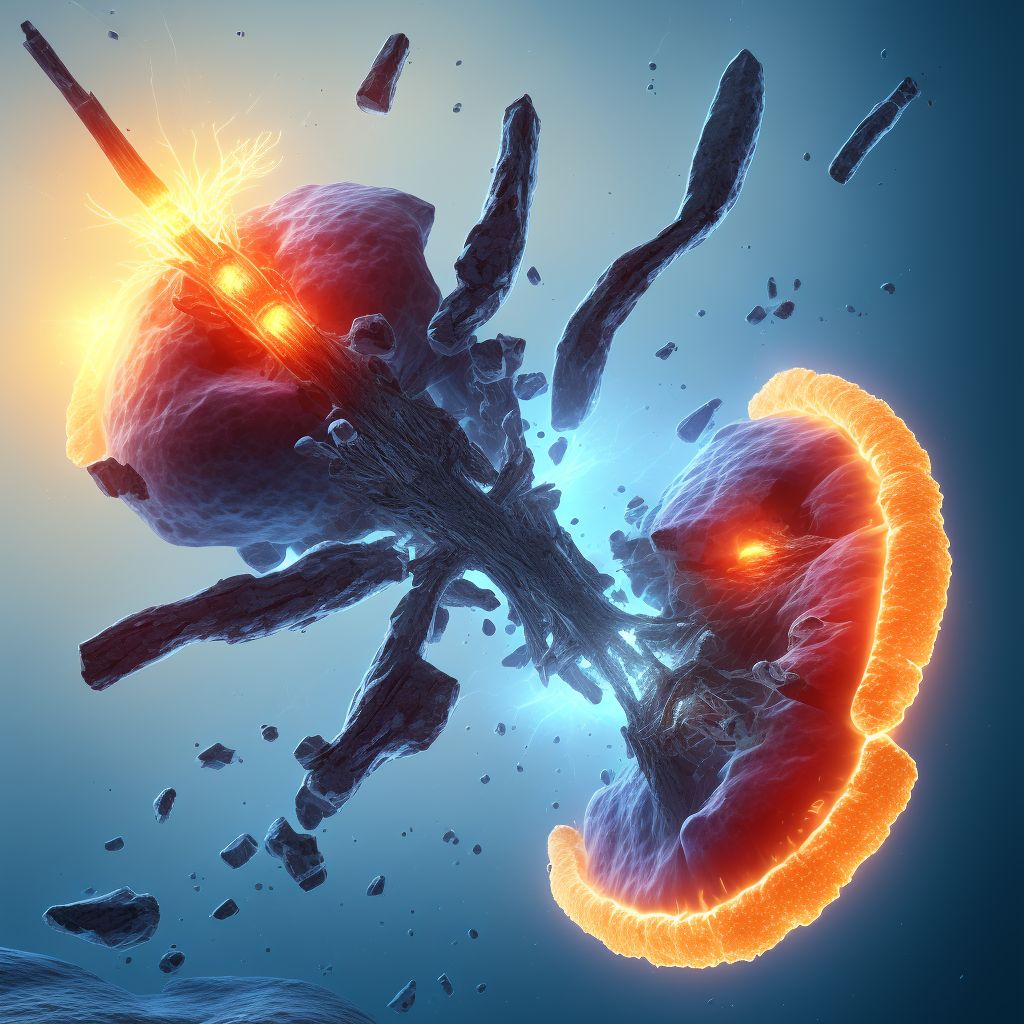
Nondisplaced fracture of medial condyle of unspecified tibia, subsequent encounter for open fracture type I or II with delayed healing Save
ICD-10 code: S82.136H
Disease category: S82.136: Nondisplaced fracture of medial condyle of unspecified tibia
Nondisplaced Fracture of Medial Condyle of Unspecified Tibia: Understanding Subsequent Encounter for Open Fracture Type I or II with Delayed Healing
When it comes to bone fractures, one specific type that requires attention is the nondisplaced fracture of the medial condyle of the unspecified tibia. In certain cases, these fractures may result in an open fracture type I or II with delayed healing, necessitating a subsequent encounter for proper management and treatment. In this article, we will explore the nature of this fracture and its implications.
A nondisplaced fracture refers to a break in the bone that does not cause any significant misalignment or separation. The medial condyle of the tibia, located on the inner side of the shinbone, is particularly vulnerable to fractures due to direct trauma or excessive stress. Such fractures can occur during accidents, sports-related injuries, or falls.
When a nondisplaced fracture of the medial condyle of the tibia remains untreated or receives inadequate treatment, it may progress into an open fracture type I or II. An open fracture involves the bone breaking through the skin, increasing the risk of infection and delaying the healing process.
During a subsequent encounter for open fracture type I or II with delayed healing, medical professionals will assess the patient's condition, including the extent of the fracture and the progress of healing. Diagnostic tools such as X-rays or CT scans may be utilized to evaluate the fracture and determine the appropriate course of action.
Proper management of this type of fracture involves a multidisciplinary approach, including orthopedic specialists, wound care professionals, and physical therapists. Treatment options may include immobilization with a cast or brace, pain management, and physical therapy to restore mobility and strength.
- Rest: Resting the affected leg is crucial to promote healing and prevent further damage.
- Immobilization: The use of a cast, brace, or splint helps stabilize the fracture and prevent movement.
- Pain management: Medications and therapies are employed to alleviate pain and discomfort.
- Wound care: Open fractures require diligent wound care to prevent infection and facilitate healing.
- Physical therapy: Once the fracture begins to heal, physical therapy exercises aid in restoring strength, flexibility, and range of motion.
In conclusion, a nondisplaced fracture of the medial condyle of the unspecified tibia can progress into an open fracture type I or II with delayed healing. Seeking timely medical attention is crucial to ensure appropriate treatment and prevent complications. If you suspect such an injury, consult a healthcare professional for an accurate diagnosis and suitable management plan.
Treatment of Nondisplaced fracture of medial condyle of unspecified tibia, subsequent encounter for open fracture type I or II with delayed healing:
Treatment Options for Nondisplaced Fracture of Medial Condyle of Unspecified Tibia
A nondisplaced fracture of the medial condyle of the unspecified tibia can be a challenging injury to manage. It occurs when there is a break in the bone without any significant displacement. In cases where there is delayed healing, it becomes even more important to explore various treatment options ...
To see full information about treatment please Sign up or Log in